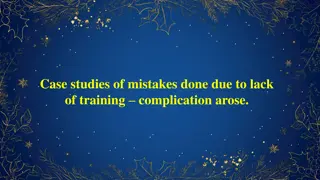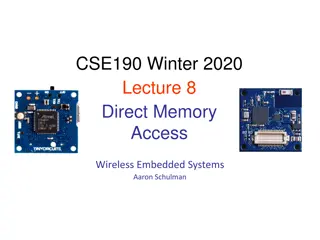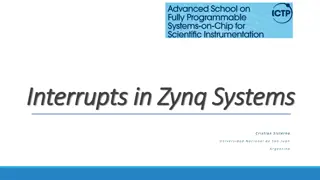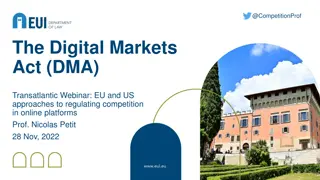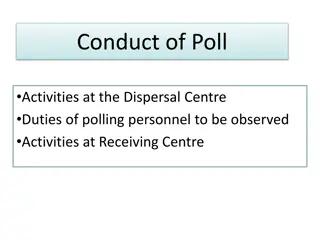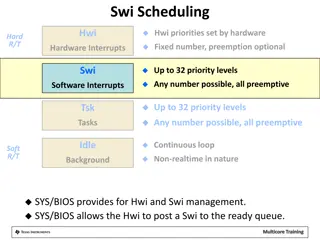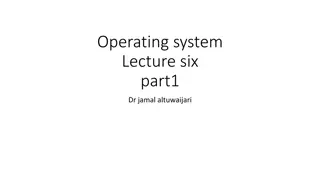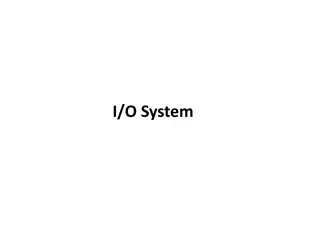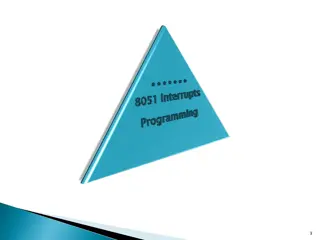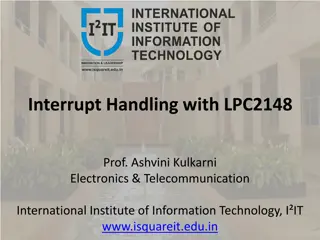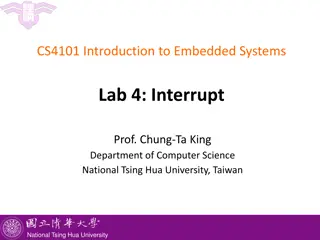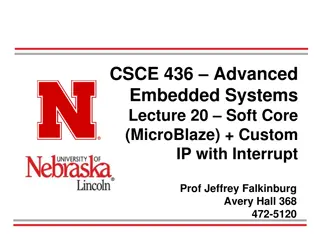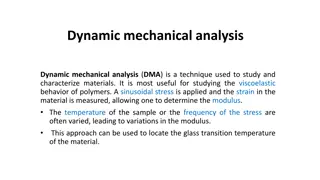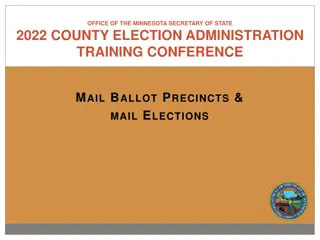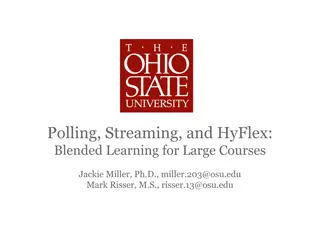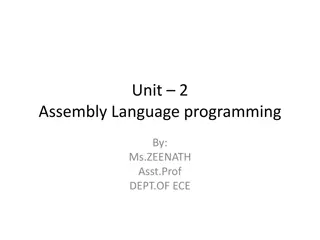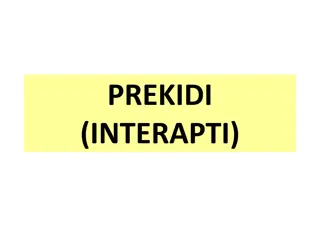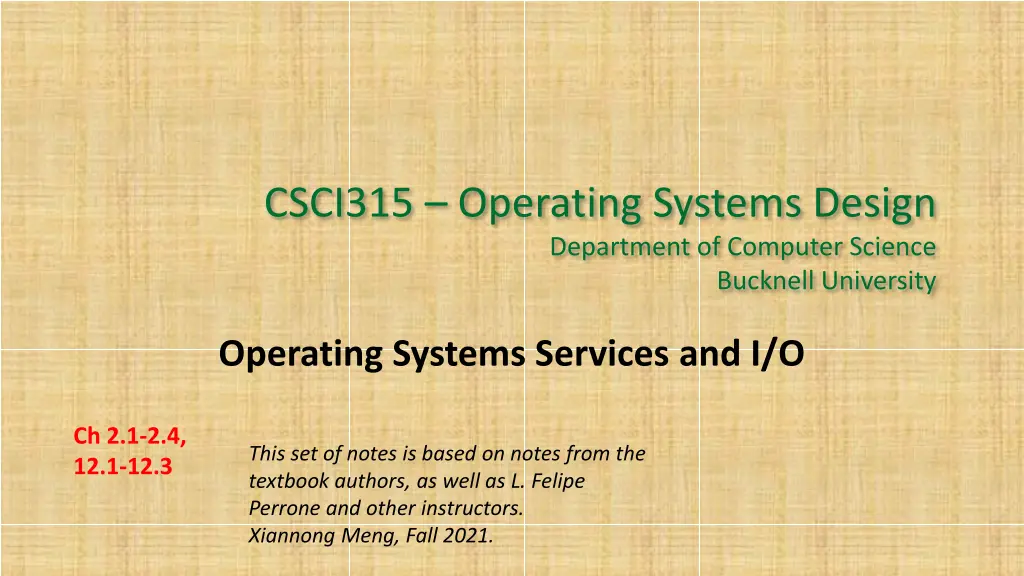
Operating Systems Services and I/O: Essential Concepts and Terms
Explore the fundamental concepts and terms related to operating systems services and I/O, covering user interfaces, program execution, file operations, process communication, resource management, and more. Learn about commonly used terms such as controllers, device drivers, ports, buses, polling, and interrupts that facilitate input and output operations in a computing system.
Download Presentation

Please find below an Image/Link to download the presentation.
The content on the website is provided AS IS for your information and personal use only. It may not be sold, licensed, or shared on other websites without obtaining consent from the author. If you encounter any issues during the download, it is possible that the publisher has removed the file from their server.
You are allowed to download the files provided on this website for personal or commercial use, subject to the condition that they are used lawfully. All files are the property of their respective owners.
The content on the website is provided AS IS for your information and personal use only. It may not be sold, licensed, or shared on other websites without obtaining consent from the author.
E N D
Presentation Transcript
CSCI315 Operating Systems Design Department of Computer Science Bucknell University Operating Systems Services and I/O Ch 2.1-2.4, 12.1-12.3 This set of notes is based on notes from the textbook authors, as well as L. Felipe Perrone and other instructors. Xiannong Meng, Fall 2021.
Services Provided by OS to Users (1 of 2) Provide users with direct services User interfaces: command line, GUI Program execution: running programs I/O: printing, viewing screen, issuing commands File operations: creating and maintaining files on disks
Services Provided by OS to Users (2 of 2) Provide users with direct services (cont.) Process communication: user programs can talk to each other Error detecting and handling: notifying users with program errors, not bringing down the system
Services Provided by OS to Systems Services needed by the system Resource management: allocating CPU time, memory, storage for all programs, including user programs Logging: keeping track of the resource usage and error status Protection and security: making sure the programs access only the authorized resources
Computing System Input and Output Assumptions: Wired network card controller I/O devices and the CPU can execute concurrently. Each device controller is in charge of a particular device type. Each device controller has a local buffer memory on board. There must be some mechanism to move data between main memory and local buffers on the controller. I/O operations move data between the device and a controller s local buffer. There must be some mechanism for the CPU to learn that an I/O operation has completed.
Commonly Used Terms Two USB ports Controller: A piece of hardware along with the software that works between the hardware device and the CPU Device driver: The program (software) that operates or controls a device through a controller for the computer system Port: Theconnection point for device Bus: Wires that the data and commands travel through Polling: The operating system periodically checks the status of an I/O device Interrupt: The I/O device in operation sends signal to the operating system when I/O is ready or needed
An Example of Controller We ve seen the Fast Ethernet controller in last lecture. Here is another one: a controller for USB ports Connectors to bus USB ports https://commons.wikimedia.org/wiki/File:USB2-PCI_Card.jpg
I/O Option 1: Polling OS on behalf of apps or systems initiate I/O data is ready ask device if data is ready end I/O data is not ready wait some time The Simpsons: https://www.youtube.com/watch?v=18AzodTPG5U
Direct Memory Access (1) Used to avoid programmed I/O (one byte at a time) for large data movement Requires DMA controller Bypasses CPU to transfer data directly between I/O device and memory
Direct Memory Access (2) OS sends the request to DMA controller. The request (command block) includes Source and destination addresses Read or write mode Count of bytes Writes location of command block to DMA controller DMA controller gains control of the bus and starts data transfer When done, interrupts to signal completion
Five Steps in DMA Transfer destination source
Hardware Support for the OS Two classes of instructions: one class for everyone to use, others with privileged use (for the OS kernel). Need to be able to switch between user mode and kernel mode. To switch to kernel mode, you need to trap to the kernel.

